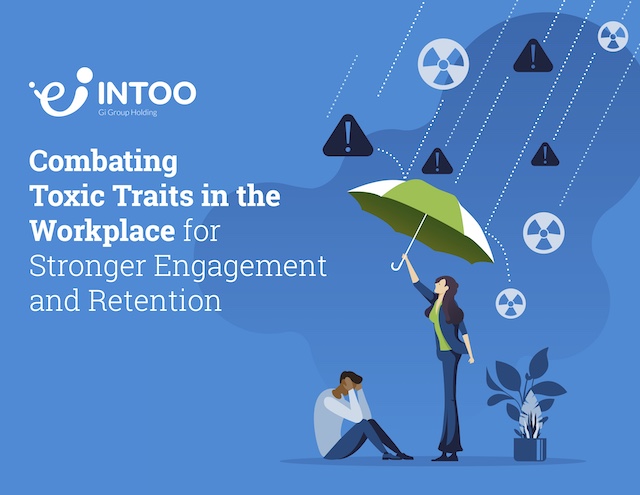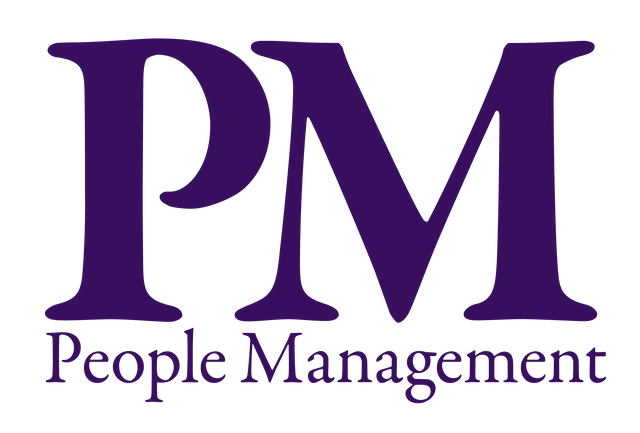The interactions companies have with applicants can significantly impact the way job seekers view them as potential employers. As well as affecting a candidate’s personal impression of a business, this can have a wider impact on an employer’s reputation. It is increasingly common for candidates to rate their experiences of a company during the application and interview process on sites such as Glassdoor—and these reviews can affect an employer’s brand. In turn, this can have consequences when it comes to the talent they can attract. Highlighting this point, research has found that 91% of job seekers visit at least one online or offline resource looking for information on an employer’s brand and reputation. It’s therefore essential for any business to establish itself as a reputable place to work, whether this is in a competitive job market where professionals are faced with multiple job opportunities or when economic conditions are less favorable and there are fewer job roles available. You can simultaneously create bonds with applicants and stand out from other organizations by improving your candidate experience.
What Is Candidate Experience?
Candidate experience describes what it’s like to apply for a role in a particular company, from the initial application right through to either being declined or hired—and beyond. Every aspect of an applicant’s journey through your organization’s recruitment procedures is included in the experience, such as the job application process, interview, and communication with HR. Those who have positive candidate experiences are more likely to accept your job offers and recommend and support your brand whether or not you hire them.
12 Ways to Improve Candidate Experience in Recruitment
Enhancing candidate experience in recruitment is crucial for attracting top talent and creating a positive impression of your organization. Here are 12 effective ways to improve candidate experience:
1. Communicate frequently with candidates
One source of frustration professionals may have during their job search is a lack of clear communication with you as the employer. Failing to follow up with a job seeker after any point in the recruitment process will lower a candidate’s engagement with your brand, which can cause them to lose interest in the position and see your organization in a negative light. Make sure to promptly reach out to applicants after major milestones in the hiring process, such as calling candidates after an interview to let them know what they need to do next or emailing them to let them know that the hiring team is still working on making a decision.
2. Be transparent with your processes
Not providing information to applicants will make it difficult for them to trust your organization. In contrast, being open about your processes can prevent misunderstandings and help job seekers feel more confident about the position they’re pursuing. This means sharing information such as who is involved with hiring decisions, when these decisions will be made, whether any further interviews will take place (and if so, how many), and when and how your company will follow up with applicants. You can also let people know if their interviews or other assessments will be done virtually or in person and list any health screenings or background checks that may be necessary as part of the hiring process.
3. Make job descriptions specific and concise
A confusing or inaccurate job description will negatively impact an applicant’s candidate experience and may attract the wrong job seekers to your company. The content of the description should include an accurate overview of the position’s duties to ensure candidates know exactly what they’re applying for. The physical requirements for a job, if any, can also be described to applicants in the job description, such as if the position requires heavy lifting or standing for long periods. You could mention employee benefits, including opportunities for career development, too, so that candidates have a clear idea of how they may be able to advance in the role.
4. Make the application process simple
An application that is difficult and frustrating to complete will dissuade candidates from seeking to work for your organization. Several factors can make a form unnecessarily complex, such as its length and lack of mobile accessibility. Avoid placing irrelevant questions on your forms to prevent job seekers from feeling as though their time is being wasted. It may help to walk through your application before opening it to external professionals to see how long it takes to complete. The easier your application is to finish, the better a job seeker’s candidate experience will be.
5. Keep declined candidates informed and engaged
It’s beneficial for employers to stay in touch with candidates who were not selected for a position. Unsuccessful job seekers should still be informed of the result rather than leaving them to wonder when they’ll hear back from your business. Offering declined applicants constructive candidate experience feedback is important because they can use it to improve their future applications and it also shows them that your company cares about their success. As part of this, it can be useful to provide unsuccessful candidates with support to improve their chances of finding work, for example by offering guidance on applications and resumes.
Remember that job seekers who missed out this time may be suitable for positions within your organization in the future, so it’s better to avoid burning bridges in favor of maintaining connections with professionals.
6. Personalized communication
Personalized communication in recruitment goes beyond addressing candidates by their names. It involves tailoring your messages to each candidate’s specific qualifications and experiences. This level of personalization shows candidates that you genuinely value their unique skills and contributions. It’s about making candidates feel seen and heard throughout the process. When you highlight how their qualifications align with the role, it reinforces their sense of fit and connection with the organization.
Personalized communication can significantly impact a candidate’s perception of your company, making them more likely to view your organization favorably, even if they aren’t ultimately selected for the position.
7. Interactive career website
An interactive career website serves as a virtual gateway for candidates to learn about your organization. It should be more than a list of job openings. It’s an opportunity to showcase your company culture, employee benefits, and growth prospects. Including employee testimonials, videos, and articles can provide candidates with valuable insights into what it’s like to work at your company.
An informative, user-friendly career page not only attracts potential candidates but also helps them make informed decisions about whether your organization aligns with their career aspirations. A well-crafted career website can be a powerful tool for engaging candidates and creating a positive impression of your company as an employer of choice.
8. Video interviews
In modern recruitment, video interviews have become an essential component. They offer numerous benefits, such as saving candidates time and travel expenses. This is especially valuable for candidates in remote locations. Video interviews also provide candidates with a platform to showcase their communication skills and personality effectively.
Additionally, they allow both recruiters and candidates to assess cultural fit and rapport more conveniently. Therefore, ensuring that the video interview platform is user-friendly, offers clear instructions, and accommodates various devices is crucial. You can use platforms like Zoom or Google Meet. An upbeat video interview experience reflects well on your organization and can make candidates more likely to recommend your company to others, regardless of the hiring outcome.
 9. Effective onboarding
9. Effective onboarding
Effective onboarding is critical to the candidate experience, as it sets the tone for an employee’s journey with your organization. It not only enhances employee retention but also contributes to job satisfaction and engagement. A well-structured onboarding process ensures that new hires have a smooth transition into their roles, reducing the time it takes for them to become productive contributors. It should provide new employees with the tools, resources, and information they need to succeed. When candidates experience a seamless transition from applicants to fully integrated team members, they are more likely to view your organization as an employer that cares about its employees’ success and growth.
10. Feedback collection
Collecting candidate feedback is a valuable practice demonstrating your commitment to continuous improvement in the recruitment process. It’s an opportunity to understand the candidate’s perspective and identify areas for improvement. Feedback surveys or follow-up emails can be used to gather insights about their experience. By actively seeking and analyzing this feedback, you can uncover valuable insights about communication, interview processes, and overall candidate engagement.
Implementing changes based on this feedback improves the experience for future candidates. It enhances your organization’s reputation as one that values input and strives for excellence in all aspects of recruitment.
11. Assessment clarity
Clarity in assessments is crucial to ensuring that candidates understand what is expected of them during the recruitment process. When assessments are well-defined, and instructions are clear, candidates can focus on demonstrating their skills and abilities rather than being uncertain about the process. When possible, providing sample questions or exercises helps candidates prepare effectively and perform at their best. Clarity in assessments also reduces candidate anxiety, ensuring a more positive and fair experience.
Candidates are more likely to engage enthusiastically when they clearly understand how their skills and qualifications will be evaluated throughout the recruitment process.
12. Candidate-centric approach
A candidate-centric approach is at the heart of creating a positive candidate experience. It involves consistently putting the candidate’s needs and experiences first throughout the entire recruitment journey. Demonstrating empathy and respect at every stage, from the initial application to the final offer or rejection, ensures that candidates feel valued and respected. It’s about recognizing that each candidate is unique, with specific aspirations and talents. When you prioritize the candidate’s well-being and experience, you create an environment where they are more likely to have a favorable perception of your organization, regardless of the hiring outcome. A candidate-centric approach also helps build a strong employer brand, attracting top talent and contributing to your organization’s overall success in the competitive job market.
Conclusion
The focus on candidate experience goes beyond mere courtesy; it has evolved into a strategic necessity. It represents a crucial element in building a robust and lasting employer brand that truly appeals to top-tier talent. Companies that prioritize candidate experience and consistently deliver positive experiences throughout the recruitment process often find themselves head and shoulders above their peers.
Implementing the 12 strategies outlined above not only contributes to creating a favorable and enduring impression but also positions your organization as an employer of choice. This, in turn, gives you a competitive advantage in attracting, engaging, and retaining the best talent, laying the foundation for sustained growth and success. In essence, the quality of candidate experiences you offer extends far beyond the recruitment phase; it plays a pivotal role in shaping your organization’s future. INTOO helps employers of all sizes with cost-effective solutions for every stage of the employee lifecycle, including candidate experience, career development, and outplacement services. Contact us to learn how we can make a difference for you and your employees.




 9. Effective onboarding
9. Effective onboarding








